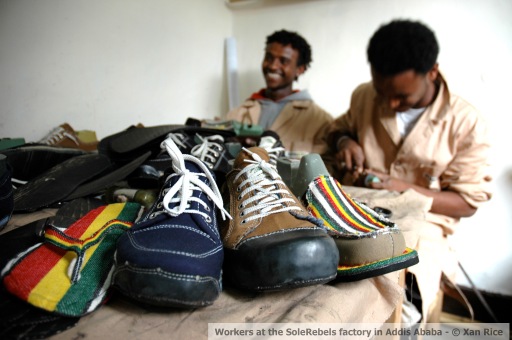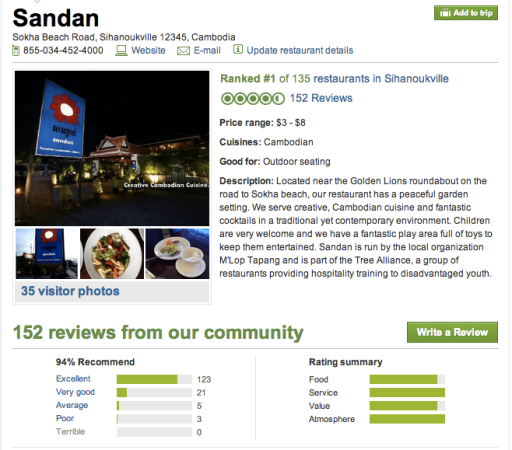For the past few weeks, I’ve been humble bragging that I’m going to present at Nerd Night. To update everyone who doesn’t live in Phnom Penh (so, probably, everyone), Nerd Night is almost exactly like Ignite Denver. A few brave souls stand up in front of a packed venue and give a Power Point presentation on anything they want. The catch is that the slides are on a timer. In Denver, there’s 15 slides with 15 seconds each, and in Phnom Penh it’s 20 slides with 20 seconds each. Both are based on some Japanese idea so they follow the same principle.
I had been working on my presentation for the last two weeks: Nonprofit Product Development. For 14 days, I was patting myself on the back, writing points down that became progressively more profound. The problem, however, is that I didn’t confirm. I thought I had confirmed, but my “nappy brain” let it slip by. (Note: my computer hasn’t been connecting to the internet properly, so I’m convinced I sent it but it just didn’t go through. WHATEVER).
So I didn’t get to knock this one off my Cambodia bucket list pre-baby, but that doesn’t mean I’m locking it into a vault until a future date when I’m not wearing a muumuu covered in baby spit-up. I’ve adapted my notes to blog-form for you to read, praise, and criticize (but probably praise). I’ll include a few necessary pictures, but I styled it in a way that the slides served little purpose besides telling the audience I was moving on to the next point. Enjoy!

Nonprofit Product Development is how I describe when nonprofits decide to make stuff to earn an income. If you’re working in the finance department, you’d list it under “earned income” or “income generation.” It can also be called the “social business” or “enterprise” branch of the organization. If you’ve worked for an NGO, you’ll know the best thing about earned revenue is that there’s no strings attached to it. You don’t have to fulfill impossible grant requirements and please ignorant donors. Unfortunately, more often than not, it’s crap someone will buy and never use again.
I was inspired to do this presentation after a comment I made in a Facebook group about how an organization in Sihanoukville could bring in some cash. I had a very specific vision of what I wanted with the most important point being something people would use when they’re back home.

I have two personal fashion rules that I strictly follow:
- I won’t wear anything that has any writing or a company’s logo on it unless I’m A) sweating profusely or B) hungover. I think it looks cheap.
- I won’t wear or buy anything that looks handmade and/or I could make myself. My style hero, Tim Gunn, made my point in this interview when he said artisans should focus on perfecting their craft without being “crafty.”
First Rule: Put the Product Before the Mission
I’m not saying to compromise your mission for the product. If you work for a children’s center, I don’t think you should sell earrings from Bangkok that were likely made with tiny, dexterous slave labor hands. However, living in Cambodia, it’s easy and cheap to make stuff from scratch with fair labor, so there’s no excuse to not use some design sense.
My first example is a totally-not-at-all grassroots social business called People Tree, based in the UK, whom I’ve mentioned in this blog before. The founder’s mission was to make sustainable, ethical fashion that is fair trade from the cotton seed planting, growing, and harvesting, to the seamstress who constructs the clothing. One reason they’re so successful is that she learned marketing your mission above the product is distracting to your consumers, who just want a cute dress.

Another, small example is Senhoa (whom I’ve also mentioned before). Their jaw-dropping statement jewelry is made by survivors of human trafficking. Their champion is Coco Rocha, one of the world’s highest profile supermodels, and they’ve received amazing publicity in People Magazine, Vogue, Elle, Harper’s Bazaar, and other publications in that realm. Not bad for an organization with a staff that I can count on two hands. To me, one of the most striking of their publicity is that there MIGHT be a blurb about how it’s for a good cause. Like People Tree, the fashion comes first.

Rule: The phrase “It’s For Charity” does not work
A harsh, kind of sad, fact of reality is that most human beings do not consider the moral implications of a purchase. If they did, then there wouldn’t be a substantial market for TOMS shoes knock-offs. (Side note: I don’t endorse TOMS as an example of a social business. They’re an example of brilliant marketing, but their business model perpetuates indecent labor practices and poverty).
Georgetown University did a study and found that slave labor is a “morally flexible” subject. That means if a product is highly desirable, on sale, or cute, then most people will find a justification to purchase it. Think about how many high and mighty NGO workers own an Apple product. I’ll be the first to admit that I’m a moral hypocrite, since I’m typing this on a MacBook and have lost not one, but two iPhones in the last year. (I’m not allowed any more iPhones.)
Here’s a quote from the study:
The strength of a brand and consumer loyalty may also influence reasoning – causing consumers to view companies such as Nike and Apple as subsidiaries that are not directly involved with the labor conditions.”
You may be wondering, “But what’s your point, Tavie?” My point is that if nonprofits want to sell stuff, they can’t rely on the fact that it’s for charity. No one cares. Appealing to someone’s sympathy can work in the short term with a small donation, but it’s not sustainable.
If you want to really get the money flowing through your doors in the long run with repeat customers and donors, create a unique and recognizable brand and quit trying to make people feel sorry for you and your clients.
Rule: Create Something of Value
There’s a place on Koh Rong, off the coast of Sihanoukville, called Monkey Island. Yes, this is a shameless plug because my husband-to-be owns it.
Their best-selling t-shirt doesn’t say “MONKEY ISLAND” across the chest…at least, not in English. It’s just bold Khmer writing that, for all tourists know, says “I’m a stupid White person.” It still goes against one of my fashion rules, but visitors love Khmer writing. I’ve lost count of how many volunteers came through Let Us Create and got a tattoo that may or may not have said “courage” or “poop juggler” in Khmer.
Conversely, Let Us Create sells children’s paintings. Lee has told me that the backroom of Monkey Republic was always full of these $4 paintings that backpackers left behind. This means people valued extra space for other cheap souvenirs more than the product the NGO was selling. Yes, the money still went into Let Us Create’s bank account, but what’s going to be more beneficial in the long run? A t-shirt that might say “Table Dance Master Crusher Champion” in Khmer and can start conversations in a lot of countries, or a finger painting that’s sitting in a backroom in middle of nowhere Cambodia?
Rule: Think Like a Capitalist
This is, by far, the hardest thing for most NGOs worker to do. There’s a reason we majored in social policy instead of marketing, and Don Draper types aren’t about to quit Sterling Cooper to work the same hours for $500 per month in a third world country.
Thinking like a capitalist means you must think of everyone – EVERYONE – as a potential consumer instead of a potential donor. This is why I love nonprofit restaurants like Sandan in Sihanoukville, Friends Restaurant in Phnom Penh, and Green Star in Siem Reap. They all score pretty high on TripAdvisor, with people commenting on the quality of both food and service.

Some people might disagree with me, saying the food is mediocre and the service is spotty. But what those complaints mean is that these restaurants are being held to the same standard as for-profit restaurants. I wish nonprofit retail stories vied for that same level of quality. Just look at what the girls at Senhoa can create. There’s no reason an NGO can’t invest their resources into training a seamstress like a waiter, or hiring a fashion graduate like they would hire an executive chef.
Simply, if you want to make a lasting impact on the lives of the people you work to serve*, train them. If you want to keep making that impact for a long time, position your organization to compete with for-profit businesses.
Last Rule: Know Your Abilities
If you suck at spreadsheets and don’t understand the terms “ROI” or “Profit Margin,” then ask for help or buy a book. It’s near to impossible to have a social business branch if you can’t analyze hard data on where you’re losing money, what sells, and when you need a marketing push. Hopefully, you have volunteers who have these sorts of skills and are willing train you. If they’re not willing, then they’re volunteering for the wrong reasons.
I can’t stress this point enough: NEVER! EVER! Make up or assume statistics based on “what you see.” If you don’t keep records of your sales or don’t look at the records, then you’re digging yourself into a hole that will be very difficult to escape. First, your co-workers won’t take anything you say seriously. Second, you won’t know what works and what doesn’t, so each expenditure turns into a shot in the dark.
To Sum Up
You will make more money if you offer people something awesome in return for their money.
You give Apple $300 and you expect an iPod in return. You give Jimmy Choo $1300 for a pair of black stilettos. You give a charity $120 and what do you get? A post card? A plush animal? Self-satisfaction? That eliminates a huge market of consumers who don’t part with their money for what is, ultimately, nothing.
There are university degrees on this subject, so I know I glossed over or completely missed a lot of information. Leave a comment if you’re thinking, “Yeah, Tavie. I get what you’re saying and would like to contribute something of value to this dialogue.” You can also leave one if you completely disagree with me and think you have a valid point to why I’m wrong.
If anything I’ve said inspires you to learn more, I encourage you to check out these NGOs and Social Businesses:
And a great book:
The Social Entrepreneur’s Handbook: How to Start, Build, and Run a a Business that Improves the World by Rupert Scofield.
——————–
*I don’t think NGO restaurants are infallible. There’s still a lot of work that needs to be done to help their graduates adapt to a fast-paced environment with real world consequences for not performing the job properly. The day I see on-call job transition coaches is the day I say I have no criticisms.












